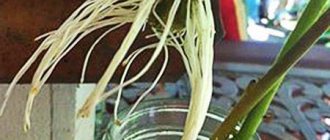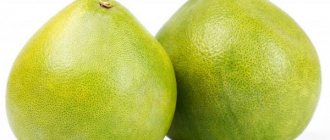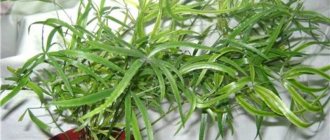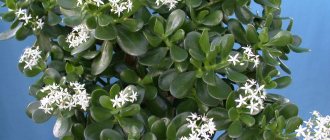How to care for chrysanthemums?
There are about 4 thousand varieties of chrysanthemums. These plants need short daylight hours to bloom. Therefore, they bloom closer to autumn. Most of them are late bloomers. It is recommended to cut off faded flowers.
During the period of flower formation, plants need regular watering. Lack of moisture causes lignification of plant stems. Chrysanthemums are watered only at the root, avoiding water getting on the leaves and flowers. These plants do not like stagnant water. During the flowering period, the frequency of watering is reduced.
Pinching is done when 8 leaves are formed. In low-growing varieties, as a rule, pinching is not done. But if the bush is several years old, then this procedure may be necessary for such varieties.
For better growth, the chrysanthemum is transplanted to a new place every 3 years. This is done in the spring, as soon as the plant wakes up. At the same time, you can immediately divide the bush.
In early spring, it is recommended to feed overwintered bushes with nitrogen-phosphorus fertilizers, and in the summer, for the formation of buds, with potassium-magnesium fertilizers.
Propagation by seeds
The seed method of propagating chrysanthemums is in demand by breeders.
The low popularity among ordinary gardeners is explained by two factors:
- The method is less reliable than propagation by cuttings or by dividing the mother bush.
- Suitable for small-flowered chrysanthemum varieties and annual varieties.
The main actions begin after the end of spring frosts:
- Prepare holes at intervals of 25 cm.
- The holes are watered with warm water, and several seeds are placed in each hole at a time.
- The sowing is sprinkled with soil and covered with film.
- The shelter is removed after the first shoots.
- The soil is periodically loosened and weeds are removed.
- After 10 days, the shoots are fertilized with the Rainbow solution.
- When the sprouts reach a height of 9 cm, the strongest one is selected from each hole, and the rest are transplanted to another place.
Chrysanthemums from seeds begin to bloom in August. If you want to get flowering at an earlier period, propagation by seeds is organized through seedlings grown indoors.
Propagation by seeds at home:
- Select shallow containers and prepare drainage at the bottom.
- Fill in a substrate suitable for chrysanthemums.
- Chrysanthemum seeds are placed on top of the soil. If they are annuals, they are sprinkled with a little soil, the seed of perennial plants is lightly pressed into the soil.
- The crops are sprayed with a spray bottle, the container with the seeds is under glass.
- Ventilation is carried out periodically.
- Optimum temperature +23…+25 °C.
- The first shoots appear after half a month. After which the containers are placed in a place with good lighting and the seedlings begin to acclimatize. The first hardening lasts 1 hour, gradually increasing the time.
- Thinning begins no earlier than 3-4 leaves appear.
- During subsequent replanting, the soil is first well moistened and weak shoots are removed.
Feeding picked chrysanthemums with diluted Zircon will help them take root well in a new place. Growing conditions vary slightly. The temperature is kept within +15…+18 °C, the substrate is periodically moistened. At the end of May, the seedlings are moved into open ground.
Is it necessary to cover chrysanthemums for the winter?
There are varieties of chrysanthemums that can survive the winter in the ground and those that cannot survive the winter outside. It is best to look for varieties that can withstand winter outside well.
As a rule, only large-flowered plants with large leaves cannot overwinter in open ground. Most small-flowered varieties tolerate winter well even without shelter.
Experienced gardeners recommend preparing flowers for winter only when they have completely faded and only dead wood remains. Then the stem can be cut off, leaving hemp 10 cm high on the surface.
If nothing is known about the ability of a variety to survive winter, in the fall - until stable 00C, the plant needs to be dug up. The shovel should not be stuck close to the root. Chrysanthemum forms a branched root system that can grow up to 20 cm from the stem.
The stem should be broken off. Place the root in a spacious container, add soil and transfer it to the cellar. Do not water or place the roots in a bag. Chrysanthemum needs a dry winter.
In winter, the condition of such a bush also needs to be monitored. If the soil in the pot is too dry, you can put a few handfuls of snow under the bush.
Another option for overwintering chrysanthemums is a polycarbonate greenhouse. If the plant grows in a pot, it needs to be dug into the ground along with the pot. The top edges of the pot should be at ground level. In this case, the green parts must be cut off and the roots covered with spruce branches and sugar bags.
In March, the pots need to be brought into a room where the air temperature will be 8-120 C. And after the young shoots appear, cut the cuttings and root them.
Some gardeners cover the roots of the plant with 10 cm of mulch for the winter: compost, peat or spruce branches, branches of deciduous trees after pruning.
Step-by-step cutting and rooting technique
For those who are planning to cut a flower they like from a chrysanthemum bouquet for the first time, but have never done this before, there are very simple and understandable instructions for this procedure.
You should not blindly expect that an unpretentious chrysanthemum will be able to easily and quickly root all cut cuttings. In order to grow a truly beautiful and viable flower, you need to carefully select the material for germination and subsequent planting in a pot or flowerbed. An ideal cutting must meet the following requirements:
- the absence of any signs of rot over the entire area of the stem;
- strong and healthy appearance;
- specimens that are too young or too old are not suitable;
- average stem thickness and sufficient rigidity.
For further germination, it is recommended to choose cuttings that have lateral branches, because they can send out roots and multiply faster than others.
Important! Material from weak, diseased or too old chrysanthemum bushes should not be used as cuttings. They either will not be able to produce roots at all, or will rot immediately after planting in open ground.
Selection of chrysanthemum stems for cuttings
The selected planting material is soaked (the lower part) in a solution that stimulates root formation, such as:
- "Epin";
- "Zircon";
- "Kornevin".
The best time for cutting chrysanthemums and then rooting the cuttings is spring, starting from mid-March and ending in late May. The plant enters early flowering in March or April, and late and middle flowering in May.
The stemness and size of the plant's flowers should also be taken into account. Thus, multi-stem chrysanthemums with large and small inflorescences are recommended to be propagated in March, single-stem chrysanthemums - in April-May, and also to be propagated in the first ten days of June
The duration of rooting of cuttings in the first three months of the year is from 20 to 25 days, in warm April or May - about 2 weeks.
Rooted chrysanthemum cuttings
The specific timing of rooting is determined by air temperature (optimally 18-23 degrees) and substrate humidity.
At the very bottom of the pot it is necessary to pour a layer of drainage from bricks ground into crumbs, fine construction sand or expanded clay. This layer will help protect the delicate root system from rot.
The soil for the soil is light, slightly acidic or neutral pH, it is advisable to mix it with a small dose of fertilizer.
Important! The diameter of the pot must be at least 28 centimeters; there must be several holes on the bottom side (on the bottom) to drain excess moisture. Before directly planting the cuttings, it is recommended to thoroughly water the soil to saturate it with moisture.
You should also loosen the soil in the pot and remove all weeds along with the roots.
If you plan to grow a new chrysanthemum bush in a flowerbed, then you should select loose, moisture-permeable and nutrient-rich soil in a sunny and slightly elevated area. In such conditions, the flower will not stretch shoots and bloom at the wrong time.
Cuttings that have successfully completed the rooting stage can be safely planted in a pot or open ground.
In the flowerbed they should not be placed too close to each other, the step is from 0.3 to 0.6 meters. Compact planting is not allowed, otherwise the flowering plant will not develop. The recommended depth of the holes is no more than 1.8 cm. The root system of the chrysanthemum bush grows parallel to the soil, so you should not bury the cuttings too deep into the soil. Around the stem placed in the hole, the substrate is carefully compacted and watered.
Planting cuttings in the ground
Advice. After planting all the material, the surface of the flower bed is spilled with a weak solution of potassium permanganate to disinfect and protect against bacteria.
The seedlings are protected from wind blowing with the help of a fence; it can also be used as a support for thin stems. A few hours after planting, young chrysanthemums may weaken, but with proper care they quickly recover.
On the same day, the growing point of the seedlings is removed; this is called the first pinching. After a few (2-3) weeks, pinching is carried out again, and the apical part of the shoot with a pair of nodules is cut off. This is necessary to form a beautiful bush shape.
For the first few days, it is advisable to shade the planted cuttings with a small canopy for speedy establishment.
How to grow chrysanthemum seedlings from seeds?
Chrysanthemum seeds, depending on the variety, can be small or medium in size. Sowing can begin in mid-February.
For planting, you can take garden soil, adding humus, vermiculite, sand, and coconut fiber to it. Planting containers must have drainage holes.
Seeds are sown scattered in moist soil. Medium-sized seed material is covered with 1-2 mm of soil. Small-seeded varieties are sown superficially, without covering them with soil. Then spray with water from a spray bottle.
The upper part of the container is covered with glass, a lid or a bag. The first shoots appear after 5-7 days.
Picking begins after 1 month. The seedlings are deepened into the ground up to the cotyledon leaves.
Planting chrysanthemums
The optimal time for transplanting and planting chrysanthemums is the end of May - the beginning of June, when the danger of night frosts is minimal. It is possible in the fall, but no later than mid-September, so that the plant can take root well before the cold weather arrives.
Perennial chrysanthemums prefer loose, well-permeable soil with sufficient nutrients. For drainage, coarse sand is poured into the bottom of a hole up to 40 cm deep. Flowers are planted at a distance of at least 30 cm from each other, having previously added 200-300 g of ash, 20-30 g of nitroammophosphate and 2-3 kg of humus under each bush. The planting site is watered abundantly. Then the chrysanthemum is placed in the planting hole and sprinkled with earth on top, but not deeply, because its roots grow parallel to the ground.
After a few days, the first pinching is done, removing the growth point on the seedling. Three weeks later, a second one is carried out - the top of the shoot with 2-3 nodes is broken off. In the first days after planting, it is recommended to shade the plant, but so that the covering does not come into contact with the leaves.
How to get a chrysanthemum from cuttings?
Cuttings are cut from the mother bush. Each cutting should be 7-10 cm.
Before rooting, the lower leaves of the cuttings are removed. For better survival and growth, they are immersed for 24 hours in 2-3 cm of water with the addition of the drug “Gumi Kuznetsova” (2 drops/50 ml). Or dip it in Kornevin powder and immediately plant it in a container with soil.
A greenhouse effect is created on top of young plants - covered with a bag and a lid for 10-15 days and placed in a warm room.
Cuttings take 2-4 weeks to root. 2-3 weeks after planting, the seedling can be fed with urea.
Young plants are planted in a permanent place when the weather is consistently warm outside. It is recommended to transplant in cloudy weather.
Propagation of chrysanthemums, features of cuttings
The peculiarity is that chrysanthemum cuttings can be taken in three seasons: summer, spring and autumn.
The summer cutting method is the simplest and does not require special skills. Select the strongest top shoots no more than 15 cm long. Plant the plant in a place protected from light and water it abundantly. After 14–16 days, chrysanthemums begin to grow.
In spring, rooting of cuttings occurs very quickly. This is the most fertile period when you can start propagating chrysanthemums.
When plant cuttings are taken in late autumn, flowers can be obtained in the spring. Having chosen a mother plant, from which almost the entire above-ground part must be cut off, it is left in the soil for another two weeks. Next, it is dug up and transplanted into a pot. The plant must be stored in a cool place at a temperature of +7 °C and ensure that the soil does not dry out.
If the plant is transferred to a greenhouse after digging, shoots will appear after a short interval of time. Propagation of chrysanthemums in the fall should be carried out when their height reaches 8 cm. The shoots are picked out from the root, which leads to 100% survival rate of the plants.











